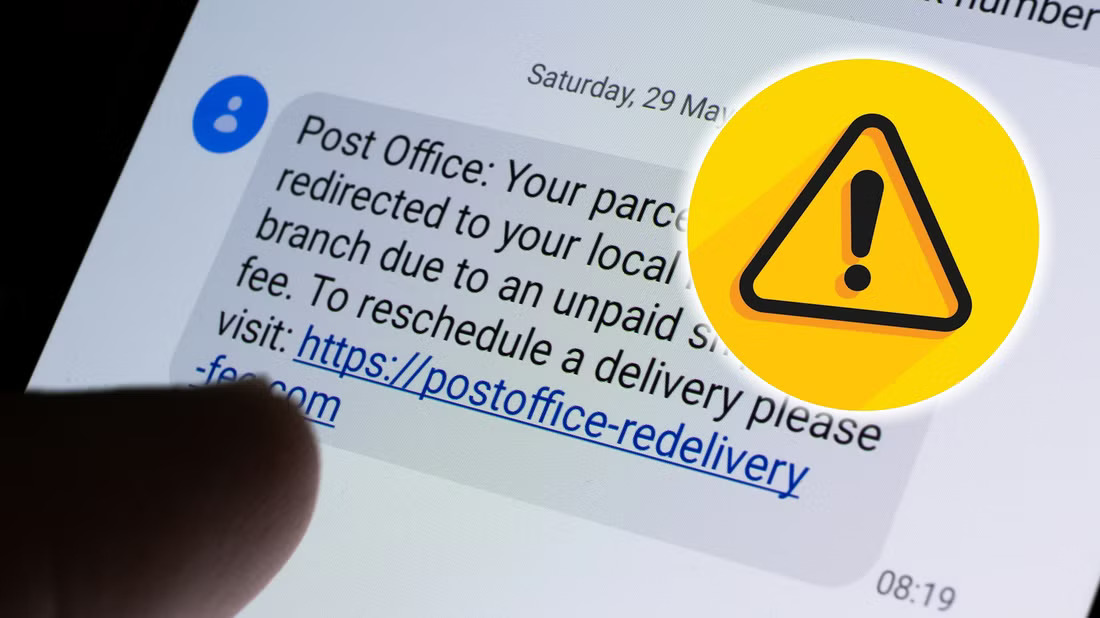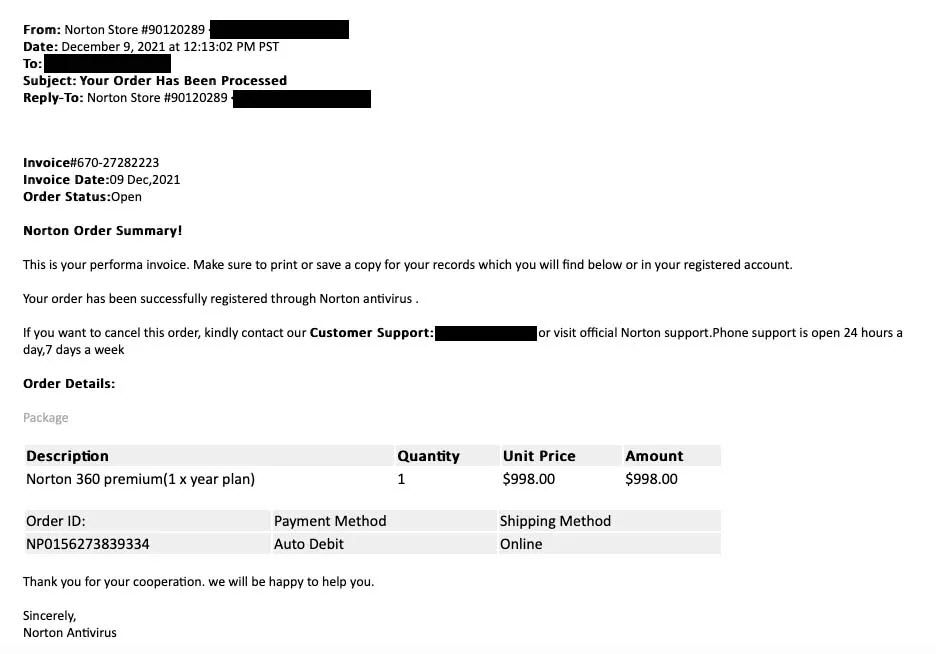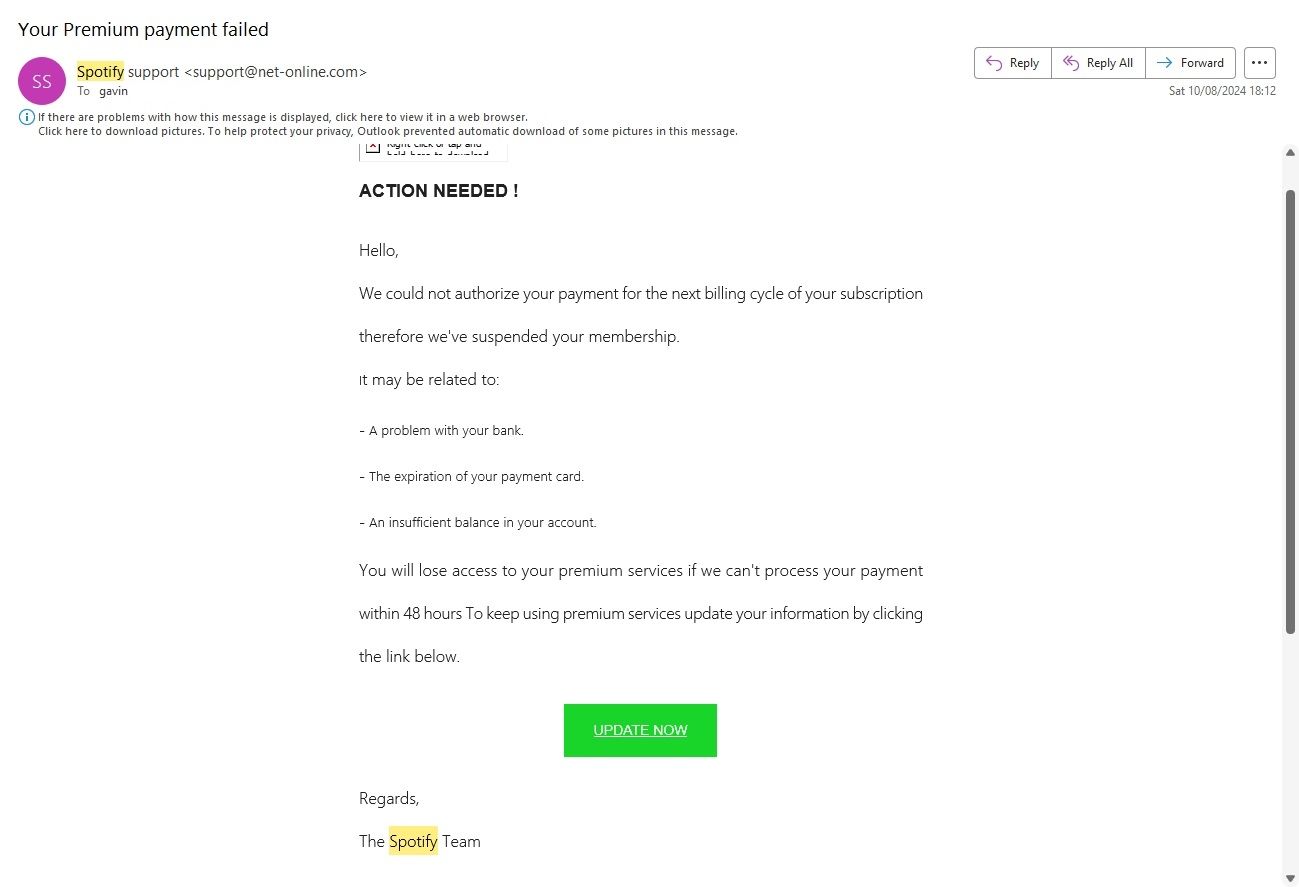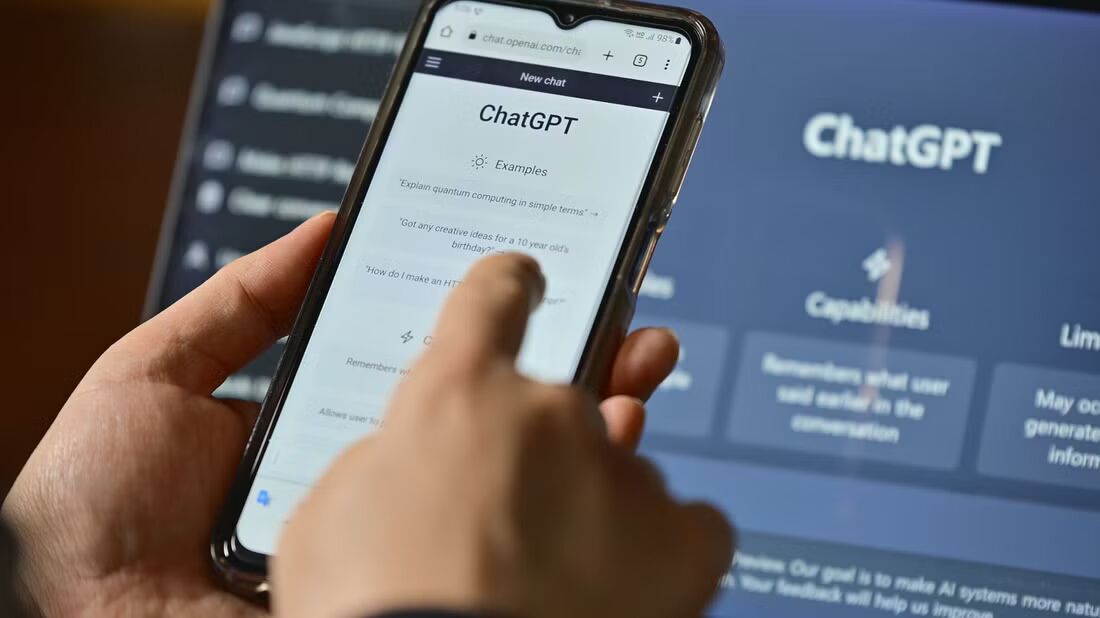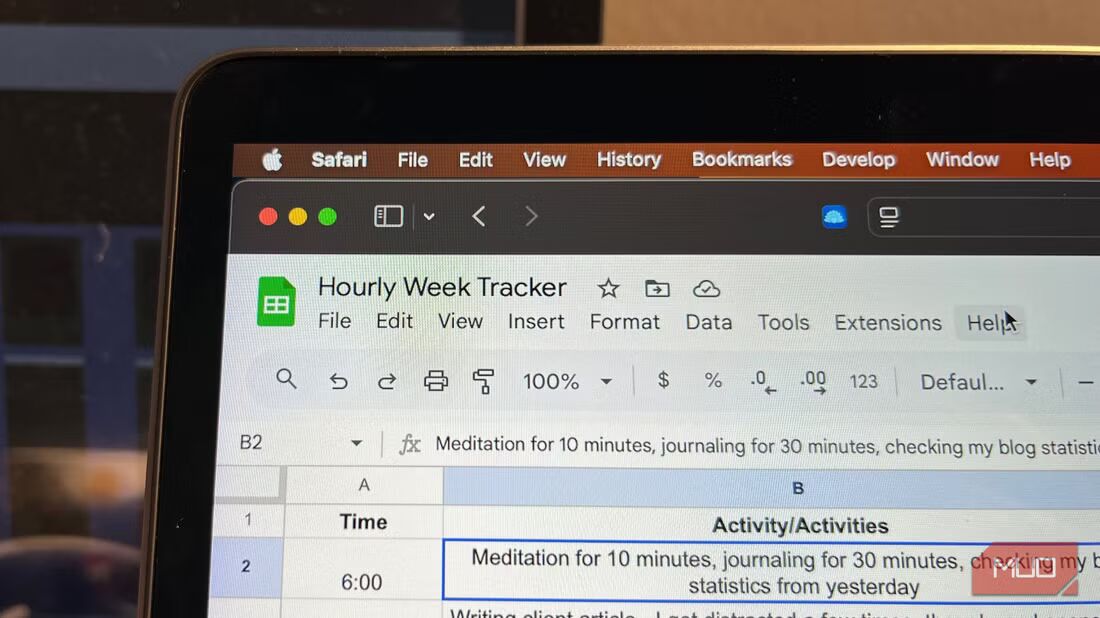Phishing scams are everywhere. No one is safe, especially as these phishing scams become more advanced and harder to spot. Thankfully, knowing a few of the key phishing scams can make all the difference to your online security.
1Suggesting That You Click on a Link to Rearrange Delivery
Whenever I order something online, I receive a text message or email claiming that my parcel wasn’t delivered. The scammer then tries to get me to click on a link to “rearrange my delivery.”
Postage scams are one of several types of phishing attacks, and I’ve received both texts and emails. These scam attempts are normally easy to identify because they happen shortly after you’ve ordered but before the expected delivery date. Moreover, you’ll see a malicious link never related to the postal service.
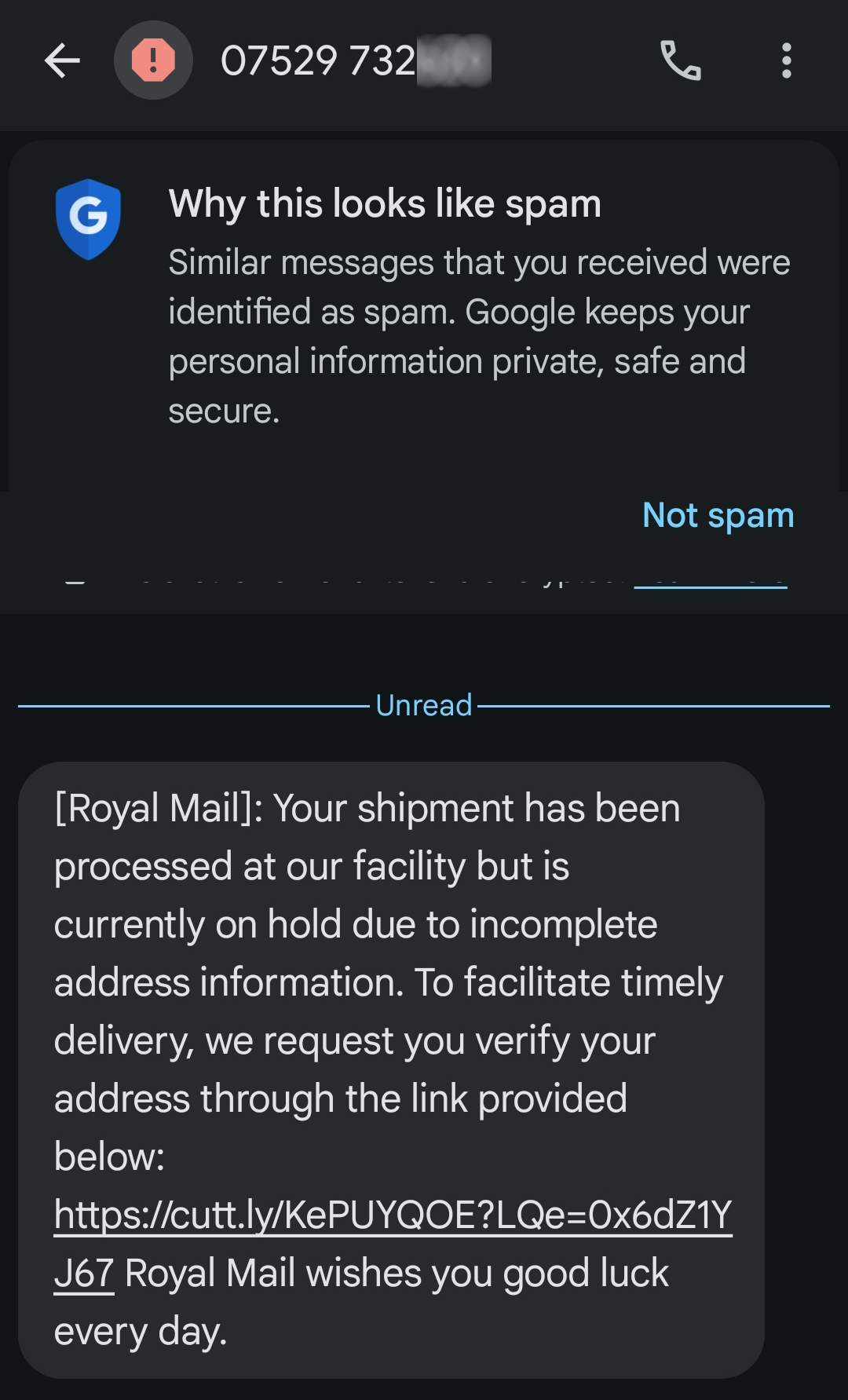
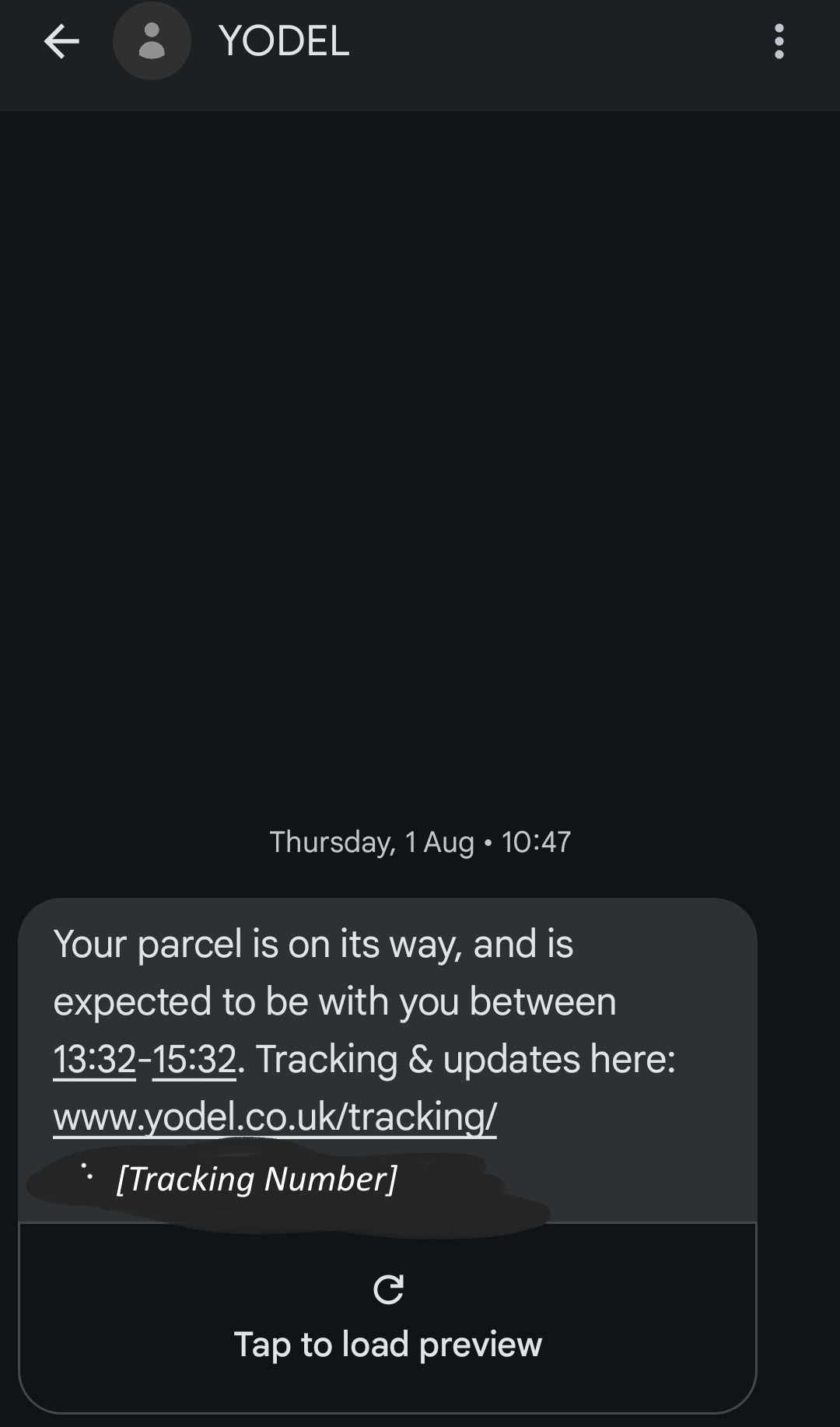
When an official postage company sends you a message, you’ll often see an email address or name that looks familiar; this is not the case with phishing scams.
2Requests to Send Money
Another common phishing scam, which also happens to be one of the oldest, is a request to send money. When this happens, the person trying to scam you will often pretend that they need the cash for an emergency. I find this form of phishing particularly heinous because it plays on the fact that most people have good intentions.
Phishing scams where the other person wants to send you money will often try and guilt-trip you. While you may feel like you’re doing the right thing, you must avoid responding or sending cash at all costs.
If strangers want to raise money for something important, they normally do this via fundraisers. However, you should still watch out for scams on GoFundMe and other platforms.
3“You’ve Won a Competition”
Another old but gold (if we can use that term) phishing scam is pretending that you’ve won a competition. With these kinds of scams, you’ll see a message that you have either won a lot of money or a fancy new piece of technology.
These scams can happen whether you’ve entered a competition or not, and they’re normally easy to avoid if you haven’t. But if the opposite is true, you must do your due diligence. Moreover, you should be very careful with social media giveaway contests.
4Fake Invoices
The most convincing phishing email I’ve ever received was a fake invoice from PayPal. I had bought something on eBay for $999, and I was worried because I thought someone had managed to access my bank account.
Thankfully, after looking a few more times over the coming days, I realized it was a fake message. These are some of the hardest to track because they’re often written with good grammar and use the same styling.
You need to be very careful with fake invoices, as they can sometimes pass your email client’s protocols for dangerous emails. Unlike most phishing scams, this didn’t end up in my spam folder. If you receive one of these, forward the message to the company’s customer support team and delete it.
5Fake Newsletters
Fake newsletters can sometimes look legitimate but might be full of dangerous links. These might have well-thought-out information (or an AI-generated email without errors). Worryingly, you might receive fake newsletters that impersonate some that you actually subscribe to.
You can normally spot fake newsletters in a few ways. First, they often don’t have an “Unsubscribe” option. In most countries, legitimate emails must include an opt-out button in your messages. And, like other phishing emails, you should check to see if a fake address sent the email.
6Google Docs Phishing Scams
Most phishing scams target email and SMS, but cybercriminals are creative in their scam attempts. Google Docs phishing scams are another common threat that you need to beware of.
This scam involves someone sharing a Google Doc with you, even if you weren’t expecting one. The document will often include dangerous links and is a similar threat to when you receive spam messages on Instagram and other platforms.
If someone tries scamming you this way, reporting the document as abuse is a very good idea. You should also manage your “Files Shared With Me” and remove yourself from the Google Doc.
7Fake Emails From Government Organizations
Fake emails from government organizations and public authorities, such as the Internal Revenue Service (IRS), are very common. This is especially the case during tax season, and if you’re a business owner, you might be a particular target.
These kinds of scams can cover many forms, but you’ll often receive a message suggesting you’re owed money. You might also receive messages that ask you to share sensitive information, such as your social security number.
While you can’t do much about some of your available information, understanding that scammers can take advantage of your social media is very important. Ensure your accounts are private to minimize your chances of receiving these emails.
8Fake “Your Payment Has Failed” Emails
Aside from failed postage scams, emails and texts suggesting that a payment has failed are the most common type of phishing message I receive. Most of the time, these will relate to services you use—for example, I’ve received them with web hosting services and my music streaming apps.
These emails are especially concerning because they can be believable. If you’re a Spotify member, and it’s close to the time your subscription usually renews, it’s understandable why you’d think you’re in trouble. Sadly, Spotify phishing scams are on the rise—as are these kinds of messaging with other apps.
You can normally identify these scams because the spelling and grammar in their messages are normally suboptimal. The ideal situation (besides not receiving these messages at all) is that you get them way out of the normal renewal date because you’ll then know that they’re a scam.
While phishing scams are more sophisticated than they once were, you can protect yourself by understanding some of the most common ones. Knowing what they look like will also go a long way in stopping you from falling victim to them. Always report these scams immediately, and never click on any links.
